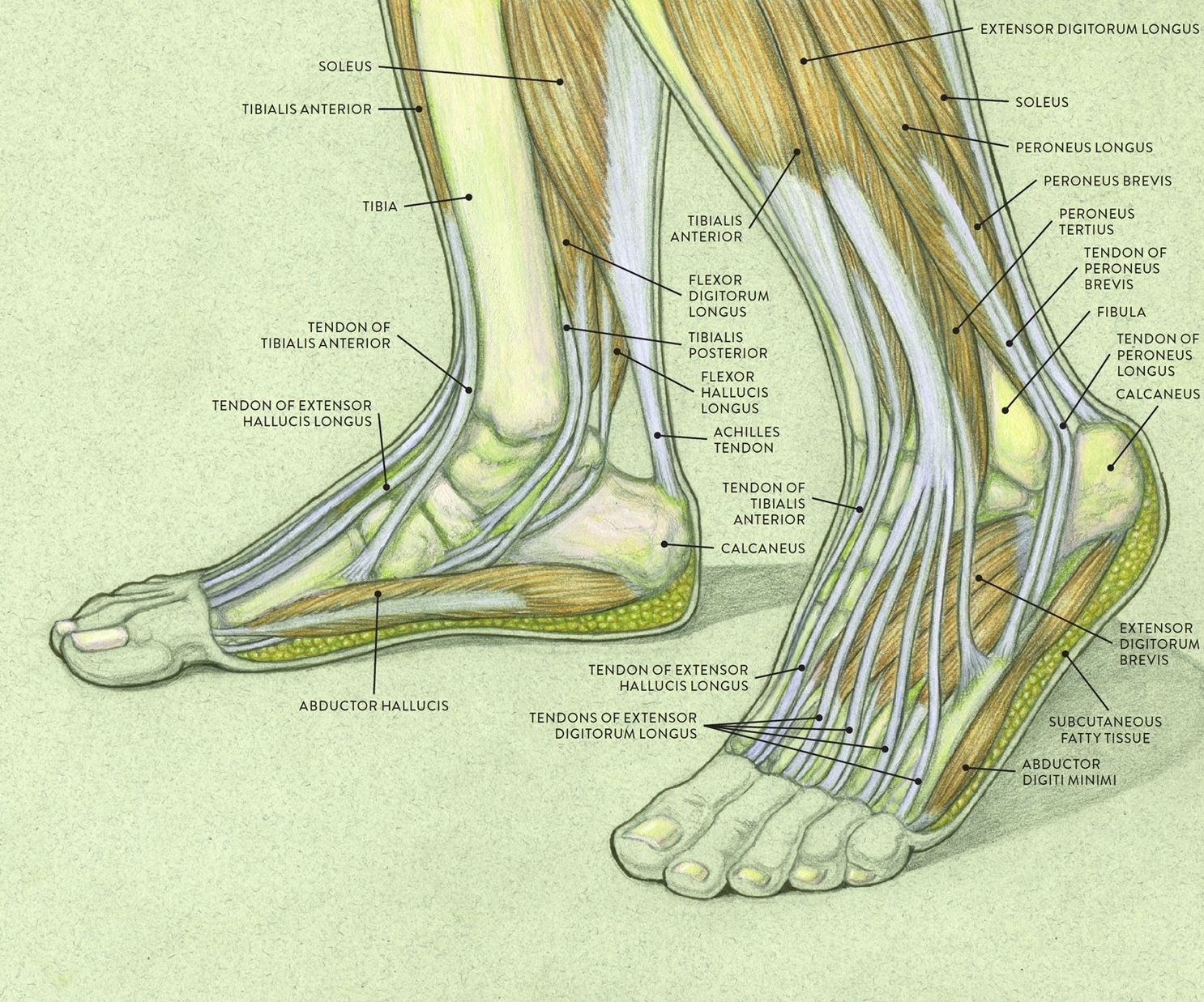The human foot, a marvel of biological engineering, is one of the most complex structures in the body. It is composed of over 100 moving parts, including 26 bones, 33 joints, and more than a hundred muscles, tendons, and ligaments.
tructural Divisions
The foot is divided into three sections: the forefoot, the midfoot, and the hindfoot.
1. Forefoot: This section consists of five long bones (metatarsal bones) and five shorter bones that form the base of the toes (phalanges). The knuckles of the toes are called the metatarsophalangeal joint.
2. Midfoot: This pyramid-shaped section comprises three cuneiform bones, the navicular bone, and the cuboid bone. These bones form the arches of the feet, providing a structure that is both flexible and sturdy.
3. Hindfoot: This section includes the talus bone and the calcaneum. The talus connects with the tibia and fibula to form the ankle joint, while the calcaneum forms the heel bone (ball of the foot). The calcaneum is the largest bone in the foot.
Muscles, Tendons, and Ligaments
The muscles of the foot are primarily located in the sole and are divided into a central (medial) group and a group on either side (lateral). The muscles at the top of the foot fan out to supply the individual toes.
Tendons are thick bands that connect muscles to bones. When the muscles tighten (contract), they pull on the tendons, which in turn move the bones. The Achilles tendon, which allows the calf muscles to move the ankle joint, is arguably the most important tendon.
Ligaments are fibrous bands that bind the bones together, providing shape, flexibility, and strength to the foot. Some ligaments form complex webs around areas that need extra support, such as the sole of the foot, the top of the foot, and the ankle joint.
Evolutionary Perspective
The complexity of the human foot may stem from its evolution from hand-like, grasping feet like those seen in apes today. Our ancient ancestors were tree-dwellers and needed to be able to hang onto branches tightly with all four limbs. This led to the evolution of extraordinarily intricate hands and feet.
cientists are not sure why our ancestors eventually developed to walk upright, which caused the fingers of our feet to fuse and create a flat surface for walking on.
Conclusion
The human foot, with its intricate anatomy, serves the purpose of supporting the body’s weight and allowing for locomotion on land. It is capable of diverse actions such as running, jumping, climbing, and walking. However, due to its complexity, the foot can be prone to various injuries and disorders, emphasizing the importance of foot health in overall well-being..



